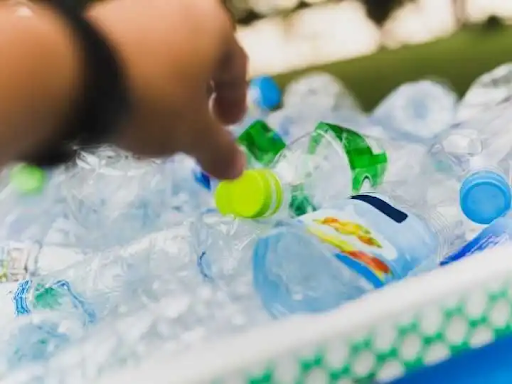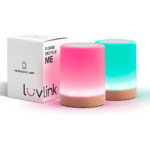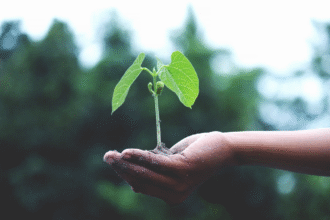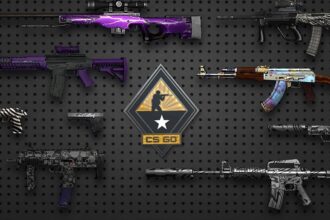Recycling bottles is a simple way to contribute positively to the environment, but the rules can sometimes seem confusing. If you have ever hesitated before your recycling bin with a bottle in hand, you are not the only one. These practical bottle recycling tips will help clarify the process and make your recycling journey much smoother.
- Know Your Bottles
First, it’s important to understand what can be recycled. Not every bottle is made the same, and the material, or container type, determines its recyclability. Generally, glass bottles, plastic bottles, and aluminum cans are prime candidates for your recycling bin.
Glass bottles, including clear, green, and brown varieties, are highly recyclable. When it comes to a plastic bottle, the recycling process gets a bit more specific. Look for the small triangle symbol, which usually has a number inside, to identify the type of plastic.
Most community recycling programs readily accept plastic bottles with the numbers 1 (PETE) and 2 (HDPE), commonly used for soda and water bottles, and milk jugs. Aluminum cans are true recycling champions because they can be melted down and reformed indefinitely without any loss of quality. Many everyday items from the grocery store are packaged in these highly recyclable materials.
- Clean It Out
Before tossing your containers into the recycling, it is important to make sure they are clean. You do not need to wash them to a sparkling finish, but a quick rinse can make a huge difference. Leftover food residue or liquids can cause recycling contamination, which can ruin an entire batch of otherwise good recyclable materials.
Contaminated items may be rejected at the recycling facility and sent to a landfill, defeating the purpose of your efforts. For sticky substances like peanut butter, use a spatula to scrape out the excess before you rinse containers. Don’t stress about removing paper labels, as the recycling process typically handles those.
The goal is to have containers clean enough to avoid attracting pests or creating mold while they wait to be processed. This simple step is crucial for enhancing recycling efficiency. It also makes handling the containers more pleasant for sanitation workers.
- Crush or Don’t Crush?
The question of whether to crush your containers is a common one with conflicting answers. Some recycling programs encourage crushing plastic bottles and aluminum cans to save space in your recycling bins and on collection trucks. However, other facilities prefer containers to remain in their original shape.
The reason for this preference is that sorting machinery at some facilities may misidentify flattened items. For example, a flattened plastic bottle might be mistaken for paper or cardboard by optical scanners, sending it to the wrong processing line. To be certain, it is best to check the guidelines provided by your local recycling program.
Never crush glass bottles, as this can lead to breakage. Broken glass poses a significant safety hazard to workers who handle the materials. It also creates small shards that can contaminate other recyclables like paper and plastic, so it’s best to avoid breakage altogether.
- Cap It Off
The debate over bottle caps has evolved over the years. Previously, the advice was always to remove them, but many recycling facilities now prefer that you leave plastic caps on plastic bottles. Modern equipment can effectively separate the different types of plastic during the grinding and washing stages of the recycling process.
Leaving the cap on also prevents it from getting lost during collection and sorting. Loose caps are small and often fall through the cracks of sorting machinery, ending up as landfill waste. The process of removing caps is less of a concern than it used to be for many recycling centers.
For glass bottles with metal lids, you should remove the lid and recycle it separately with other scrap metal. If your recycling program is unclear about its preference, a safe bet is to collect plastic caps in a separate, larger plastic container, seal it, and toss the whole thing in the bin. This prevents them from becoming loose contaminants.
- Separate Different Materials
Many products come in packaging made from multiple materials, and separating them is a key part of effective recycling. A plastic bottle with a metal component, for instance, should have the parts separated before you recycle it. This simple action significantly improves the quality of the recycled materials and the overall recycling process.
Personal care products are frequent culprits, often featuring pump dispensers with a hidden metal spring inside a plastic housing. This whole pump mechanism should be removed and thrown in the trash before recycling the plastic bottle itself. The action of removing these extra parts helps to keep the plastic stream pure.
Look for any non-recyclable elements attached to your beverage container. This includes things like plastic film wrappers or mixed-material seals. Taking a moment to separate these items helps produce cleaner bales of recycled material, which are more valuable and easier to turn into new products.
- Know What Not to Recycle
Recycling isn’t always intuitive, and putting the wrong items in your bin can do more harm than good. This practice, known as “wish-cycling,” can contaminate batches of recyclables and damage sorting equipment. Learning what to leave out is as important as knowing what to put in.
Here are some common items that typically do not belong in your curbside recycling bin:
- Broken glass is a safety hazard for workers.
- Mirrors and window panes have a different chemical composition and melting point than glass bottles and jars.
- Light bulbs, which contain hazardous materials and require special disposal.
- Ceramic bottles or containers, which do not melt down like regular glass.
- Plastic bags are a major source of contamination at recycling facilities because they jam the machinery.
- Paper products with a waxy or plastic coating, like some frozen food cardboard boxes, can be difficult to process.
When you are uncertain about an item, the safest course of action is to check your local municipality’s recycling guidelines. If you can’t find a clear answer, it’s better to place it in the trash. This helps maintain the integrity of the recycling stream.
- Use a Bottle Depot
For those living in areas with refund systems, using a Calgary bottle depot is an excellent way to handle your container recycling. These facilities offer a deposit refund for eligible beverage containers, providing a financial incentive to recycle. A depot visit is often more effective than curbside recycling because it guarantees the containers get properly recycled.
Bottle depots in Calgary usually accept a broader range of containers than standard recycling programs, including items like milk jugs, juice boxes, and other plastic beverage containers. Preparing for your visit can save time and streamline the refund process. A good practice is to sort containers by type before you go.
Many people use a large cardboard box or multiple boxes to organize their items. Keeping glass, plastic, and aluminum separate can make your trip to the bottle depot recycling center much faster. This also helps the staff process your return more efficiently, getting you your deposit refunds without delay.
| Preparing for a Bottle Depot Visit | ||
|---|---|---|
| Container Type | Preparation Tip | Why It Helps |
| Aluminum Cans | Rinse and keep whole (or lightly crushed if space is an issue). | Clean cans are easier to process and prevent pests. |
| Plastic Bottles | Rinse, leave caps on, and do not crush completely. | Helps with sorting and ensures the small caps get recycled. |
| Glass Bottles | Rinse well and transport carefully in a sturdy cardboard box. | Prevents breakage and contamination of other materials. |
| Tetra Paks (Juice Boxes) | Rinse, flatten, and keep the plastic straw inside. | Saves space and keeps all components together. |
- Reuse When Possible
While recycling is a great habit, the old adage “reduce, reuse, recycle” places reuse before recycling for a reason. Before you send a bottle on its recycling journey, consider if it can have a second life in your home. Reusing items reduces the demand for new products and the energy needed to create them.
Glass bottles and jars can be transformed into beautiful vases, candle holders, or storage containers for pantry staples. Empty water bottles can become mini-greenhouses for seedlings or funnels for household tasks. With a bit of creativity, many everyday items can be repurposed.
Reusing containers helps cut down on the consumption of single-use plastic and supports a more circular economy. Even simple reuses, like refilling a sturdy plastic bottle with water, make a difference. This approach minimizes waste and our reliance on virgin materials.
- Buy Recycled
To truly make the recycling system work, we need to close the loop by purchasing products made from recycled materials. When you choose items packaged in recycled plastic or made from other recycled materials, you create a stable market for the items you put in your recycling bin. This demand is essential for making recycling economically viable.
Many companies are now committed to sustainable production and proudly advertise that their packaging is made from 100% recycled content. Supporting these businesses sends a clear message that consumers value sustainable production practices. Your purchasing power can drive significant change in the industry.
Recycled materials are used in a surprising number of products, from clothing and carpeting to automotive parts and new construction materials. Choosing these products helps conserve natural resources and reduce the energy and pollution associated with manufacturing from virgin materials. It is a powerful way your individual choices can support a healthier planet.
- Educate Others
Once you are confident in your recycling habits, share what you have learned with your friends, family, and community. The collective impact grows exponentially as more people adopt correct recycling practices. The vital role of education cannot be overstated in improving our collective recycling efforts.
Consider organizing community bottle drives, which are a fantastic way to collect a large number of beverage containers while raising awareness. You could share helpful tips on a social media page or simply lead by example. Often, people want to do the right thing but are unsure how.
If you have children, involve them in the recycling process. Make it a household activity to sort containers or create a game out of identifying the recycling symbols. Teaching the next generation about environmental responsibility helps build a more sustainable future for everyone, as they start their own recycling journey on the right foot.
Conclusion
Recycling bottles doesn’t have to be a complicated task. By understanding which materials are accepted, keeping your containers clean, and knowing the specific rules of your local program, you can make a real difference. These key takeaways should help you navigate the process with confidence.
Remember that every single plastic bottle or aluminum can that gets properly recycled is one less item in a landfill. This simple act conserves energy, reduces pollution, and lessens the need for new virgin materials. Now that you have these bottle recycling tips, it’s time to put them into action and become a champion for a cleaner environment.

















